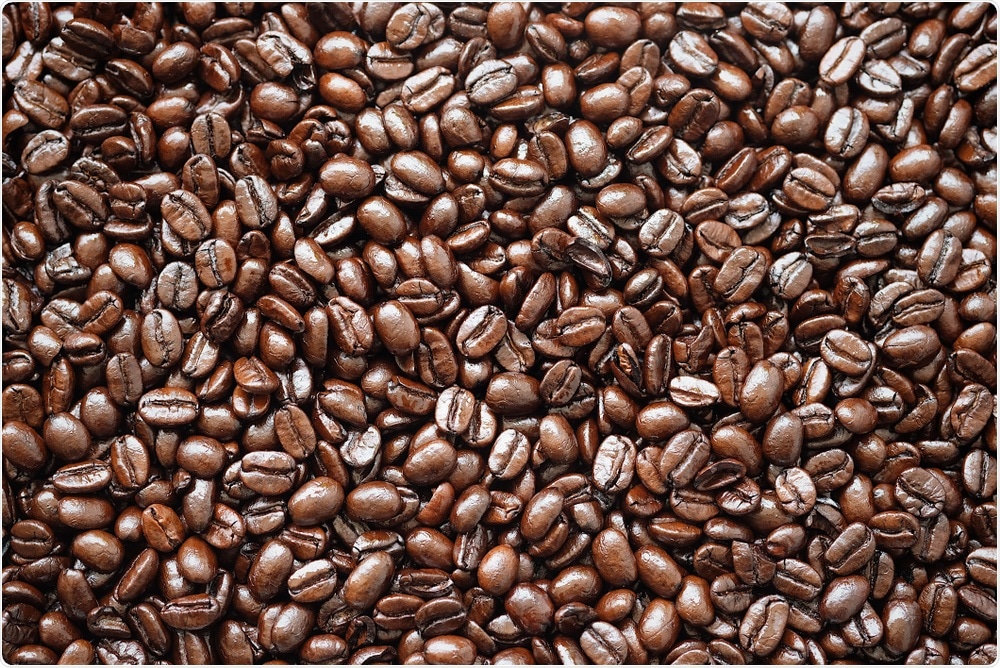Researchers from the University of Nottingham have shown that coffee can activate brown fat in the body. The team of researchers led by Professor Michael Symonds, explain that brown fat usually helps the body to keep warm. Now, coffee has been shown to increase the release of heat from brown fat, potentially boosting weight loss efforts. The study was published this week in the journal Scientific Reports. It is titled, “Caffeine exposure induces browning features in adipose tissue in vitro and in vivo.”
 Witthaya Sumdaengphai | Shutterstock
Witthaya Sumdaengphai | Shutterstock
Symonds explains, “Brown fat is a unique organ that is used for producing heat. It's present in quite small amounts in the body.” This form of fat releases energy as heat, rather than storing it as fat.
Until recently, brown fat was thought to exist only in hibernating mammals and in young mammals, including humans. Now, we know that small pockets brown fat are maintained into adulthood, where they influence weight loss.
Recent studies have shown that those with a lean body and low body mass index tend to have more brown fat compared to those with higher body mass index. A normal adult has around 50 and 100 grams of brown fat in their bodies, and when this fat is activated, it can produce 300 times more heat compared to any part of the body. This can form around 10 percent of the daily heat produced by the body.
The team of researchers write that brown fat can help metabolize nutrients such as glucose and fat using activation of a special protein called the “mitochondrial uncoupling protein 1 (UCP1)”. They write that diet can affect the functions of the UCP1 but the exact effects are not yet known.
Caffeine present in coffee is capable of increasing expenditure of energy and thus helps in losing weight. To explore if the caffeine in coffee could alter functions of UCP1, the team took stem cells that were developed into fat cells and exposed them to caffeine.
The results revealed that there was increase in UCP1 activity, increase in metabolism within the cell, increase in consumption of oxygen as well as leakage of protons. Further changes were seen in the mitochondria as well as the lipid droplet they add.
Overall, caffeine was found to increase the expression of certain genes including, “PPARγ, adiponectin and FABP4.” These genes code for regulators of brown fat and metabolism. Further caffeine also affected “beige markers” such as, “CITED1, CD137 and P2RX5,” and brown selective genes such as “UCP1, PRDM16, PGC-1α, LHX8 and COX8b and AR-ß3.” This part of their study was in vitro.
Applying the findings to humans
The next part of the study focused on adult humans. Participants included 4 healthy males and 5 healthy females aged an average of 27 years (±6 years). The men and women had a normal body mass index (BMI) of around 23.
The volunteers were clothed in loose fitting clothes and were studied in the morning before any exercise, caffeine intake or other drugs or alcohol intake within 9 hours past. Temperature was measured using “thermally reflective skin markers” placed at different sites over the body.
After a baseline measurement of their temperatures, they were given a beverage which was either “Nescafe© Original 1.8 g sachet ~65 mg caffeine dissolved in 200 ml water at 22 °C” or water. 30 minutes later, their temperatures were taken again. The main region of interest was the tissue surrounding the collar bone or the “supraclavicular region”. Temperatures in these regions rose after taking coffee in all the subjects, the researchers noted.
From our previous work, we knew that brown fat is mainly located in the neck region, so we were able to image someone straight after they had a drink to see if the brown fat got hotter. The results were positive and we now need to ascertain that caffeine as one of the ingredients in the coffee is acting as the stimulus or if there's another component helping with the activation of brown fat.”
Prof Symonds
They write that this is the “first study to determine that the stimulatory effects of caffeine on UCP1 seen in vitro can be translated to adult humans ingesting caffeine in a commonly consumed coffee beverage.” The team concludes that “caffeine can promote BAT (brown adipose tissue) function at thermoneutrality and may have the potential to be used therapeutically in adult humans.”
The researchers advise that other dietary components should be studied to observe their effects on brown fat, metabolism, and burning calories. The team plans to expand their study to obese individuals with or without diabetes and see the effects of caffeine.
We are currently looking at caffeine supplements to test whether the effect is similar. Once we have confirmed which component is responsible for this, it could potentially be used as part of a weight management regime or as part of glucose regulation programme to help prevent diabetes.”
Sources:
Journal reference:
Velickovic, K., et al. (2019). Caffeine exposure induces browning features in adipose tissue in vitro and in vivo. Nature Scientific Reports. doi.org/10.1038/s41598-019-45540-1.